The use of doubled haploids in maize breeding was first proposed more than half a century ago. Today, the in vivo haploid induction technique is routinely used in maize inbred line development, in both the public and the private sector. The DH technology enhances maize breeding in two ways: 1) it reduces the time required to produce completely homozygous inbred lines. Whereas six or more generations of self-pollination are needed to traditionally produce inbreds, DH technology produces inbreds in only two generations; and 2) because the higher genetic variance among DH lines compared to F2 plants, or selfed F3 or F4 families, improves the effectiveness of selection.
DH technology in maize breeding was the theme of a training workshop organized by the University of Hohenheim (UH) and CIMMYT at Stuttgart, Germany, during 11-15 June 2012. The program was organized under the ‘Abiotic stress tolerant maize for Asia’ (ATMA) project funded by Deutsche Gesellschaft für Internationale Zusammenarbeit (GIZ). A total of 21 scientists, including maize breeders and physiologists from Bangladesh, India, Philippines, Vietnam, UH, and CIMMYT attended the weeklong course. Experts on DH technology from UH, CIMMYT, and German seed companies served as resource persons on the course, delivering lectures on various aspects of DH technology in maize breeding. Mornings were devoted to lectures whilst in the afternoons, participants undertook hands-on, practical project in various aspects of DH line development and production.
Day-1 presenters included UH’s Wolfgang Schipprack; Vanessa Prigge, an ex-PhD student of UH and CIMMYT who is currently working as a Potato Breeder in SaKa Pflanzenzucht GbR, and T. Wegenast, Dow AgroSciences. In the afternoon, participants worked on identification of haploid kernels from various DH-induced populations and planted haploid kernels on germination paper for development of seedlings. DH lab members at UH explained and demonstrated the selection of haploid kernels and developing seedlings for colchicine treatment for chromosome doubling.
On the second day, B. Schilling and B. Devezi of the UH-DH lab jointly presented various aspects of management of greenhouses, safety issues, and requirements for running a successful DH program. E. Senger a PhD student at UH, and Vijay Chaikam, CIMMYT, also shared their experiences. During the afternoon, preparation of colchicine solution, preparation of maize seedling for colchicine treatment, application of colchicine treatment, and the transplanting the seedlings in greenhouse were demonstrated to the participants.
Participants also visited the UH-DH research station at Eckartsweier, where Schipprack detailed various field based aspects of DH development including selection of plants for transplanting in field, organized demonstration of mechanized transplanting of D0 plants, management of D0 nursery, and identification of false positives in the nursery. After the D0 nursery, participants visited the DH inducer development and maintenance nursery, D2 nurseries, and the isolation block for production of induction crosses. On the final day of the workshop, UH’s A.E. Melchinger delivered a lecture on the application of marker-based prediction strategies for DH lines and discussed various models and approaches for prediction of DH lines. George Mahuku shared updates on DH line production and development of tropical inducer lines at CIMMYT, and talked about possible models for use of DH technology by national breeding programs in Asia. Participants appreciated the initiatives and efforts of CIMMYT and UH, and discussed various options to get DH technology into their breeding programs.
Avinash Singode, Directorate of Maize Research, Bhagya Rani Banik, Bangladesh Agriculture Research Institute, and Le Quy Kha, National Maize Research Institute, were very supportive of the course and expressed their sincere thanks to organizers. P.H. Zaidi, Project Coordinator, ATMA, thanks Prof. Melchinger and Schipprack and his team for their time, efforts, and inputs in jointly organizing the workshop, and emphasized the need to follow up on this in the hope that within one year, each participating institution will have access to DH technology in their program, at least through Model-1 (send their most elite population to CIMMYT, and get back DH lines), as suggested by Mahuku.
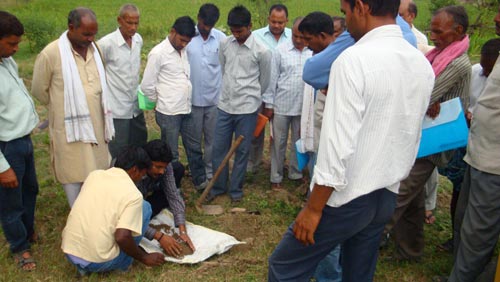 A series of farmer-scientist interaction meetings to create awareness of
A series of farmer-scientist interaction meetings to create awareness of 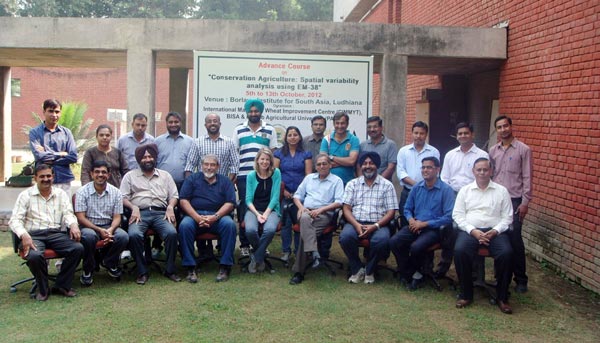
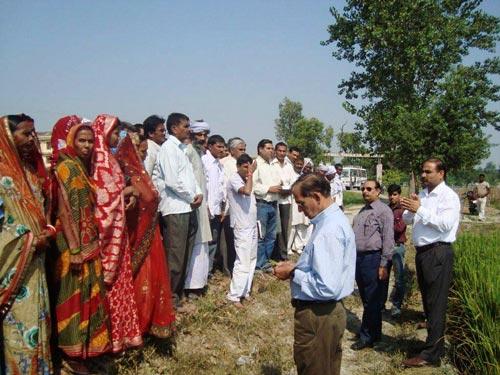 Under the aegis of Climate Change, Agriculture and Food Security (CCAFS), CIMMYT, Rajendra Agricultural University (
Under the aegis of Climate Change, Agriculture and Food Security (CCAFS), CIMMYT, Rajendra Agricultural University (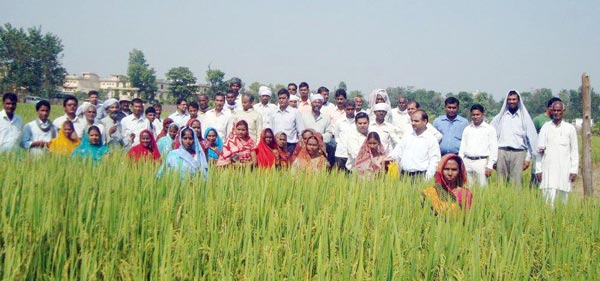
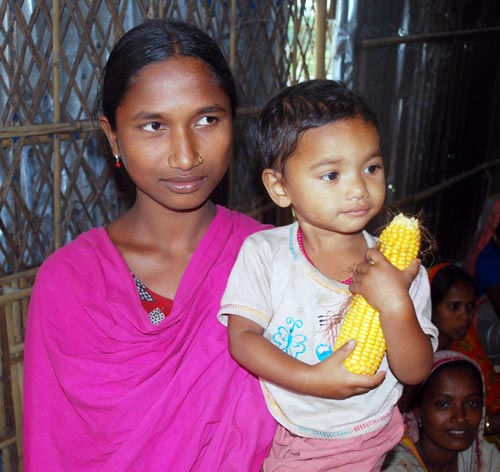 The U.S. Agency for International Development (
The U.S. Agency for International Development (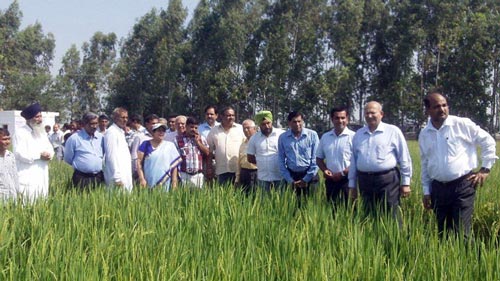 While cereal production in India has increased significantly since the mid-1960s as a result of the Green Revolution, securing the gains achieved is becoming more difficult in the context of soaring food and fuel prices, volatile markets, depleting water resources, soil degradation, and the effects of global climate change. To discuss strategies for improving efficiency and resilience of farming systems as a way to ensure sustainable food security, over 400 participants gathered for an in-field stakeholder meeting on ‘Empowering Farmers for Climate Smart Agricultural Practices in Haryana’ in Taraori, Karnal, India, on 28 September 2012. The event was organized by the CGIAR Research Program on Climate Change, Agriculture and Food Security (
While cereal production in India has increased significantly since the mid-1960s as a result of the Green Revolution, securing the gains achieved is becoming more difficult in the context of soaring food and fuel prices, volatile markets, depleting water resources, soil degradation, and the effects of global climate change. To discuss strategies for improving efficiency and resilience of farming systems as a way to ensure sustainable food security, over 400 participants gathered for an in-field stakeholder meeting on ‘Empowering Farmers for Climate Smart Agricultural Practices in Haryana’ in Taraori, Karnal, India, on 28 September 2012. The event was organized by the CGIAR Research Program on Climate Change, Agriculture and Food Security (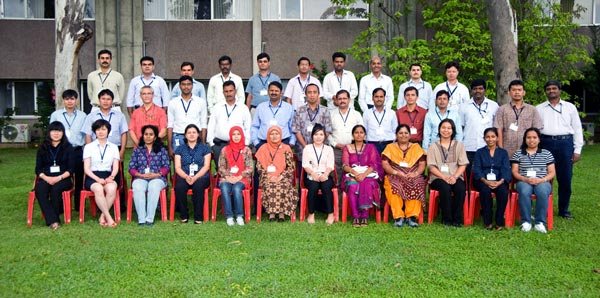
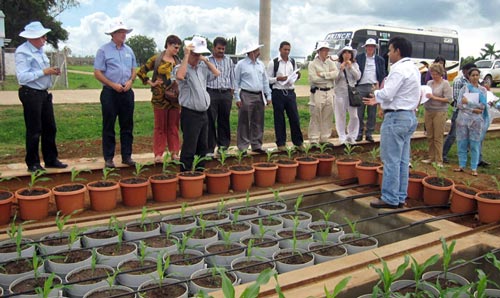 After a formal introduction, Zaidi gave an overview of the research program and priorities of the CIMMYT-Asia maize program, and the ongoing collaborations with various public and private institutions in the region, including the International Maize Improvement Consortium (IMIC-Asia). He emphasized CIMMYT’s initiatives towards purposeful partnerships, which offer a big opportunity for pro-poor agricultural investment and innovations (such as IMIC-Asia and MAIZE), the global alliance for food security, and the livelihood of resource-poor in the developing world.
After a formal introduction, Zaidi gave an overview of the research program and priorities of the CIMMYT-Asia maize program, and the ongoing collaborations with various public and private institutions in the region, including the International Maize Improvement Consortium (IMIC-Asia). He emphasized CIMMYT’s initiatives towards purposeful partnerships, which offer a big opportunity for pro-poor agricultural investment and innovations (such as IMIC-Asia and MAIZE), the global alliance for food security, and the livelihood of resource-poor in the developing world.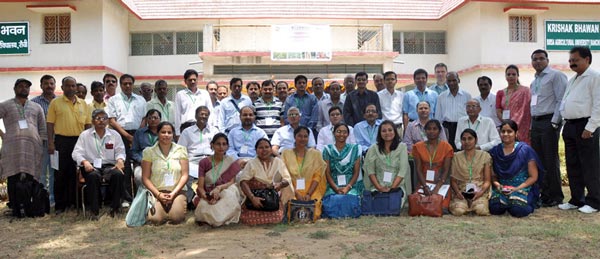
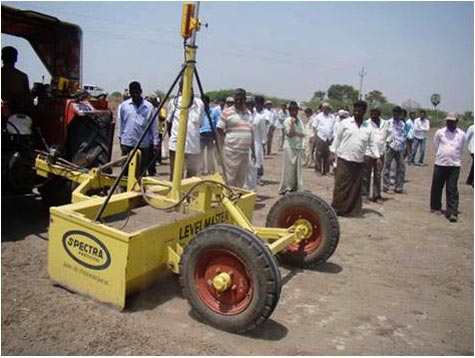 Discussions covered laser leveling, direct-seeded rice, zero-till maize, conservation agriculture machinery, the turbo seeder for residue management, weed management, pest management, cultivar choices, potential diversification options using resource-conserving technologies, and the potential for diversification and the adoption of water-wise practices to make more efficient and productive use of irrigation water. The operation and benefits of conservation agriculture machinery, including the laser land leveler, zero-till multi-crop planter, and turbo seeder, were demonstrated and explained. Farmers who have adopted the technologies shared their views and encouraged others to adopt.
Discussions covered laser leveling, direct-seeded rice, zero-till maize, conservation agriculture machinery, the turbo seeder for residue management, weed management, pest management, cultivar choices, potential diversification options using resource-conserving technologies, and the potential for diversification and the adoption of water-wise practices to make more efficient and productive use of irrigation water. The operation and benefits of conservation agriculture machinery, including the laser land leveler, zero-till multi-crop planter, and turbo seeder, were demonstrated and explained. Farmers who have adopted the technologies shared their views and encouraged others to adopt.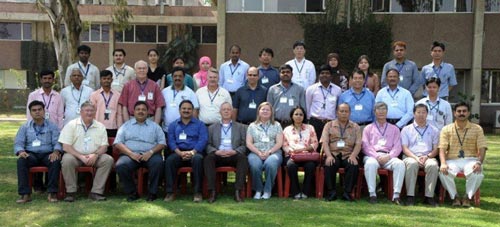
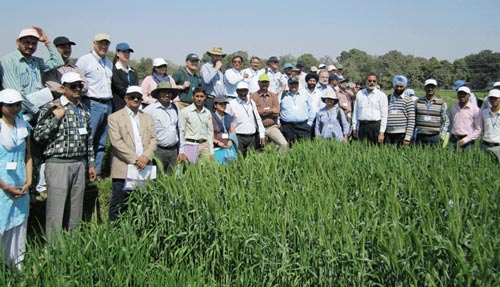 Meeting was held in the Indian holy city of Varanasi during 27 February to 01 March 2012. It was organized jointly by Banaras Hindu University (BHU), HarvestPlus, and CIMMYT to discuss wheat biofortification research outputs and future plans. The meeting was attended by about 40 scientists, including Hans Braun, Ravi Singh, Kevin Pixley, Velu Govindan, Etienne Duveiller, Arun Joshi, and Iván Ortiz-Monasterio from CIMMYT, along with participants from the Bill & Melinda Gates Foundation, HarvestPlus, the Indian national agricultural research system, the private sector, and more than 200 farmers from the eastern part of the state of Uttar Pradesh.
Meeting was held in the Indian holy city of Varanasi during 27 February to 01 March 2012. It was organized jointly by Banaras Hindu University (BHU), HarvestPlus, and CIMMYT to discuss wheat biofortification research outputs and future plans. The meeting was attended by about 40 scientists, including Hans Braun, Ravi Singh, Kevin Pixley, Velu Govindan, Etienne Duveiller, Arun Joshi, and Iván Ortiz-Monasterio from CIMMYT, along with participants from the Bill & Melinda Gates Foundation, HarvestPlus, the Indian national agricultural research system, the private sector, and more than 200 farmers from the eastern part of the state of Uttar Pradesh.